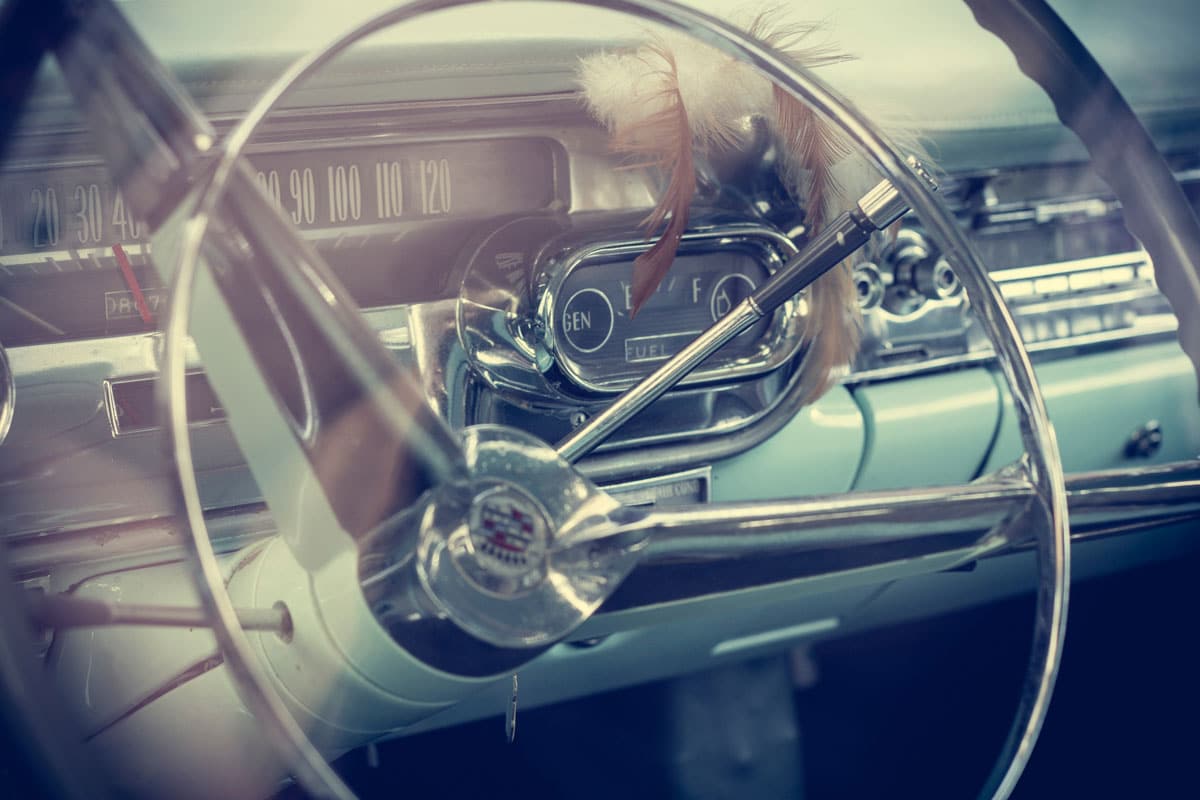Considering converting to an electric car but unsure about the ins and outs? Converting your classic ride may be the sustainable solution you’re looking for. This no-nonsense guide cuts through the complexity to show you exactly what goes into electrifying a car. Covering essential steps, cost considerations, and compelling reasons to convert, we promise clarity without the jargon. Dive in to make an informed decision on whether converting your vintage ride to and electric car fits your lifestyle.

Key Takeaways
- Electric car conversions can breathe new life into classic vehicles, combining vintage charm with modern electric power, resulting in a sustainable and efficient driving experience.
- Adhering to legal and compliance requirements, including re-registration and ensuring safety standards, is crucial when embarking on electric conversion projects to avoid any legal issues.
- Converting a classic car to electric offers numerous benefits, including environmental advantages, cost savings on running and maintenance, and an enhanced driving experience due to instant torque and reduced noise.
Table of Contents
Electrifying Your Ride: The Essentials of Electric Car Conversions
The journey towards electric car conversions starts by grasping the fundamentals. Whether you love vintage cars or classic sports cars, converting them to electric power is a process (but one that can be done!)
Imagine transforming your gasoline-powered classic vehicle into a 100% electric car! The combustion engine, gearbox, and exhaust are replaced with electric motors, batteries, and power electronics, making your classic car ready for the new generation of electric vehicles.
Choosing the Right Donor Car
Selecting the right donor car or truck is a critical step in converting a classic to electric. The goal is to maintain the classic cars appeal, look, and feel while seamlessly integrating electric power. For instance, the Electric Bronco, with its innovative Freeway series chassis from Kincer Chassis, preserves its vintage look while ensuring seamless design compatibility with new electric components. Even the original driving mechanics are maintained, offering a smooth transition from gasoline to electric power.

Understanding Electric Motors
Choosing an appropriate electric motor also plays a significant role in the conversion process. From brushed DC motors to permanent magnet motors, there’s a wide array of options to choose from for your conversion project. Each type of motor has its unique characteristics, affecting factors like acceleration, top speed, and overall efficiency.
For example, DC motors are known for their high torque at low speeds, making them suitable for applications that require quick acceleration.
Battery Basics
The battery serves as the lifeblood of an electric vehicle. In an electric car conversion, a bigger battery can store more energy, enabling a longer driving range before needing to recharge. It can deliver more power to the electric motor, leading to improved acceleration and overall performance.
Now that we’ve got the basics covered, let’s shift gears and delve into the legalities and compliance aspects of electric car conversions.
Legalities and Compliance
Legal compliance is paramount when converting cars to electric. Make sure you check to see if you can legally convert your older car to electric power. Conversion offers a fantastic opportunity for you to keep your classic cars running in a more sustainable and eco-friendly manner. But how do you ensure your converted electric vehicle meets all the necessary regulations?
Meeting Vehicle Regulations
Converted electric vehicles must comply with government-set emission standards and other vehicle regulations to ensure safety and performance on the road. If you’re having your conversion done at a resto-mod shop they should be able to check all this for you. If you’re doing this yourself, be smart, and make sure you’re dotting all the I’s.
The Re-Registration Process
Once your car is converted, you’ll need to re-register it as an electric vehicle with your local Department of Motor Vehicles (DMV). The process involves providing necessary information and documents such as proof of ownership, proof of insurance, and safety inspection reports. You’ll also need to pay the appropriate registration fees.
Now that we’ve navigated through the legalities and compliance, it’s time to dive into the step-by-step conversion process.
Step-by-Step Conversion Guide
Understanding the intricate details of the conversion process, we should outline a comprehensive guide. From removing the combustion engine to installing the electric motor and batteries, and finally setting up the power electronics, every step is an integral part of the journey to converting your car to electric.
Removing the Combustion Engine
The first step in the conversion process is removing the combustion engine. This task involves loosening the engine mount bolts, lifting the engine out of the car, and storing it safely. While this can be challenging, the right tools and a bit of patience can make the process smooth and efficient.
Installing the Electric Motor and Batteries

Once you use your garage tools to remove the original engine, the next step is installing the electric motor and batteries. This involves using an electric conversion kit or crate motor, which includes the motor, mounting structure, high-voltage cabling, and a battery. It’s a thrilling endeavor that requires specialist mechanical and high-voltage electrical knowledge.
Power Electronics and Final Touches
The final stage in the conversion process involves:
- Installing power electronics, which are crucial for managing the energy flow and controlling the motor speed
- Setting up the charging port
- Mounting the motor
- Installing control systems and instrumentation
- Testing and calibrating components to ensure all safety features are in place.
Now that you have a better understanding of the conversion process, let’s delve into the cost breakdown of electric conversions.
Cost Breakdown of Electric Conversions

Several factors can cause the cost of electric car conversion to fluctuate considerably, including:
- The vehicle’s complexity
- Custom fabricated components needed
- Performance specifications
- Range
- Charge time
- Any additional features such as heating or power steering
Parts and Components Pricing
The cost of parts and components for an electric conversion can vary widely. For instance, the average cost of an electric motor for a car conversion ranges from $10,000 to $15,000, while a battery pack can range from $5,000 to $25,000 depending on the pack size, manufacturer, and project complexity.
Labor and Expertise Costs
In addition to parts and components, labor and expertise costs also factor into the total cost of an EV conversion. The average hourly rate for professional electric car conversion typically ranges from $5,500 to $25,000, reflecting the varying complexity and specific vehicle requirements. The total cost also depends on the duration of the project.
Now, let’s shift gears and explore the advantages of switching to electric.
Advantages of Switching to Electric
Opting to convert a classic car to electric power brings along numerous advantages. From environmental to financial benefits and improved driving performance, there’s a lot to gain from making the switch to electric.
Environmental Benefits
Electric conversions offer substantial environmental benefits, including:
- Eliminating tailpipe emissions, which significantly reduces the carbon footprint of the car and contributes to the fight against climate change
- Increased energy efficiency, leading to reduced overall energy consumption and pollution
- A cleaner and greener future
Savings on Running Costs
Switching to electric also brings significant savings on running costs. Not only can you save on fuel costs, but electric cars also require less maintenance than traditional gasoline vehicles, resulting in further financial savings.
Moreover, EV owners may enjoy spending about half as much on routine maintenance tasks compared to owners of conventional cars.

Enhanced Driving Experience
Electric cars offer a smooth and enjoyable driving experience. Thanks to instant torque, electric cars provide quicker acceleration, offering a more responsive and thrilling driving experience (we’ve all seen the videos of people’s reactions when they first feel a Tesla takeoff.) With less noise and vibration, some might considerr driving an electric car a more comfortable and serene experience compared to driving a gasoline car.
Next, let’s navigate through the process of finding the right EV conversion company.
Finding the Right EV Conversion Company
Selecting an adept EV conversion company is critical for the successful completion of your project. A credible company can guide you through the process, provide quality parts, and offer valuable after-sales service. When assessing a company, look into their certifications, customer reviews, success in the industry, and warranty offerings.
Now that we have covered the process and benefits of electric car conversions, let’s delve into the longevity and maintenance of converted EVs.
Longevity and Maintenance of Converted EVs
Converted electric vehicles not only provide a distinctive driving experience but also promise durability and minimal maintenance requirements. The average lifespan of a converted electric vehicle is between 15 to 20 years or around 200,000 miles, which is quite impressive.
Battery Life and Replacement
The battery is the heart of a converted electric vehicle, and its lifespan is a key consideration. On average, electric car batteries can last between 8 and 12 years, with some even lasting up to 15 to 20 years.
When the time comes, replacing the battery can bring improved performance and extended driving range.
Routine Maintenance Needs
Routine maintenance for converted electric cars includes:
- Managing the replacement of tires
- Cabin air filter replacement
- Brake inspection and maintenance
- Tire rotations
- Inspection and refill of applicable fluids
On average, EV owners may enjoy spending about half as much on these routine maintenance tasks compared to owners of conventional cars.
Now, let’s explore the exciting customization and personalization options for EV conversions.
Customization and Personalization Options
The potential for customization and personalization is one of the most exhilarating aspects of electric car conversions. From power electronics to exterior enhancements, there’s a world of possibilities to make your converted electric car truly unique and tailored to your preferences.
Summary
Converting a classic car to electric power is a thrilling journey, offering a host of benefits including environmental impact, savings on running costs, and an enhanced driving experience. While the process involves understanding the essentials of conversions, legal compliance, finding the right conversion company, and understanding the costs involved, the result is a unique, personalized, and sustainable mode of transport that marries the past’s charm with the future’s promise. Ready to embark on this electrifying journey? Let us know what you’re converting!
Frequently Asked Questions
How much does it cost to convert your car to electric?
Converting your car to electric can cost around $10,000 to $35,000. While it may seem like a significant amount, it could be worth it in the long run. Consider the potential savings on fuel and maintenance.
Can any car be converted to EV?
Yes, it is possible to convert a gas or diesel-powered car to electric, making the process more accessible than you may think. Additionally, a conventional vehicle can be converted to an all-electric, plug-in hybrid, or hybrid electric vehicle (HEV).
Which car is easiest to convert to electric?
The best car to convert to electric would be one with plenty of space for batteries, the ability to use the original gearboxes, and is well-built and rust-free. This would make the conversion process more straightforward and cost-effective.
What are the essentials of an electric car conversion?
To convert a car to electric, start by selecting the right donor car and familiarizing yourself with electric motors and battery fundamentals. This will set you up for a successful conversion.
What are the legalities involved in an electric car conversion?
You need to ensure that your converted electric car meets all vehicle regulations and re-register it as an electric vehicle. It’s important to comply with the legal requirements for the conversion.



